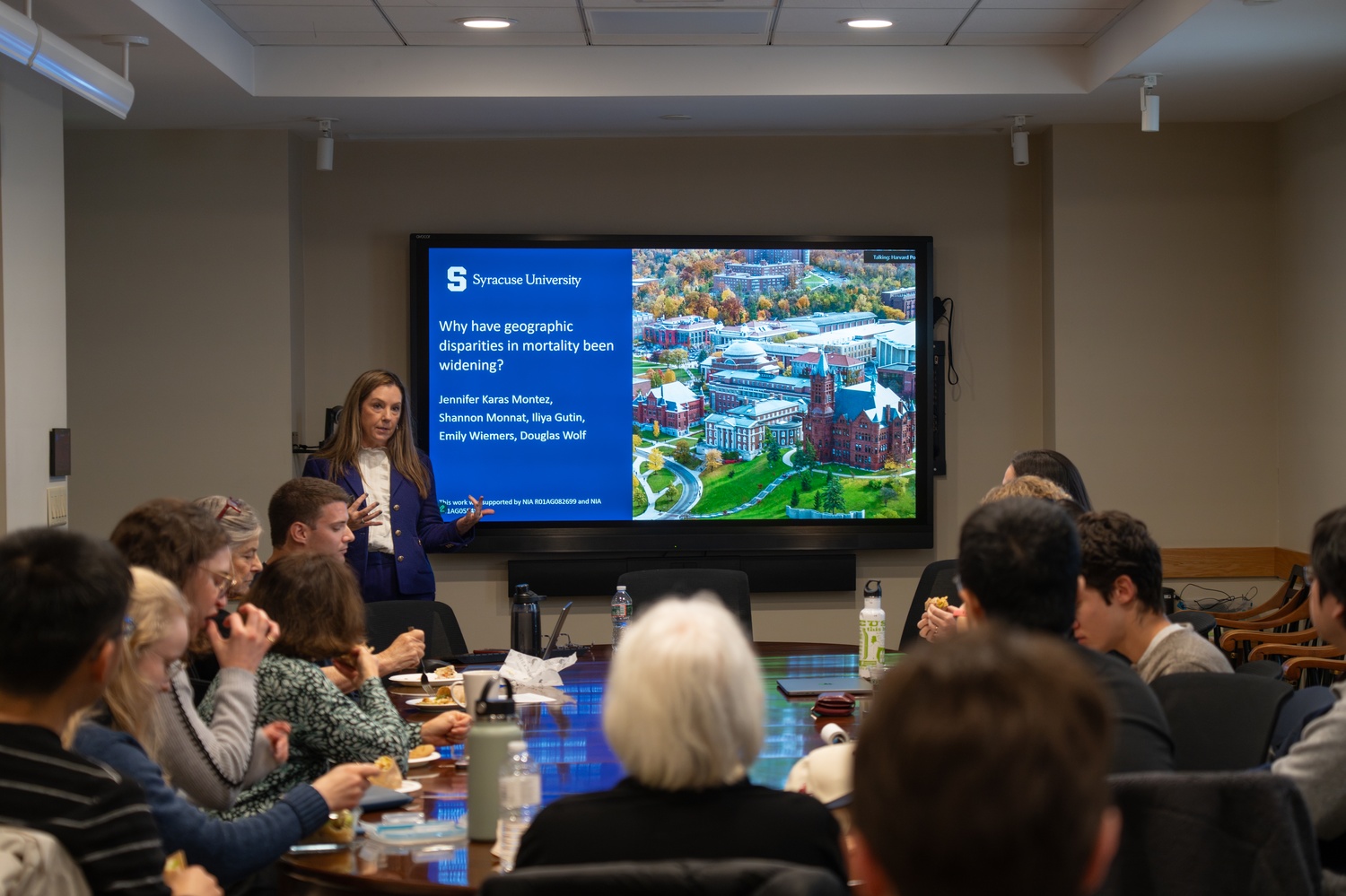
News
Summers Will Not Finish Semester of Teaching as Harvard Investigates Epstein Ties

News
Harvard College Students Report Favoring Divestment from Israel in HUA Survey

News
‘He Should Resign’: Harvard Undergrads Take Hard Line Against Summers Over Epstein Scandal

News
Harvard To Launch New Investigation Into Epstein’s Ties to Summers, Other University Affiliates

News
Harvard Students To Vote on Divestment From Israel in Inaugural HUA Election Survey
Sociology Professor Connects Polarized State Policies to Diverging Mortality Rates at Harvard Talk

Syracuse University sociology professor Jennifer K. Montez suggested that disparities in working-age mortality rates across the U.S. have been rising as state policies become increasingly polarized at a Thursday lecture hosted by the Harvard Center for Population and Development Studies.
Montez explained that average life expectancy across states was converging until 1984, when state policies began to diverge. She discussed these changes at a lecture with the Harvard Center for Population and Development Studies.
The policy areas with the greatest impact on life expectancy — such as labor, gun control, and tobacco — also tend to be the most “polarized” policies state-by-state, according to Montez.
“What’s also interesting is that during this time period, the policies that matter the most are the same policies that polarize the most, so it’s a double whammy,” Montez said.
Montez estimates that if states had adopted uniform policies on the issues, their populations could see a higher life expectancy by two to three years and around 220,000 fewer deaths of working-age people per year.
Montez used Oklahoma and Connecticut to illustrate differences in state policies. Over recent decades, state-level policies like minimum wage and Earned Income Tax Credit, which were virtually identical in 1990, have become more conservative in Oklahoma and more liberal in Connecticut. Since 1990, Connecticut’s life expectancy has increased at a higher rate than Oklahoma’s.
Part of Montez’s work includes translating her analysis to the real world and sharing research in discussions with lawmakers. Montez said she initially struggled to engage lawmakers in her results when articulating differences in life expectancy.
“The response was, ‘Why do I care if my constituents are living 78 versus 80? It’s just two years,’” Montez said.
The difference in life expectancy is rooted in the fact that more working-age people are dying, which Montez said the data did not clearly articulate to lawmakers. Instead, she began representing the gap as a higher premature mortality rate.
“If we’re going to communicate this to policymakers, it has to be in a metric that is motivating and that they can really wrap their heads around,” Montez said.
Her current research project focuses on differences within states, examining disparities in cross-county mortality rates. Montez determined that accounting for various demographic factors at the county level — including the percentage of college graduates, immigrants, Hispanics, and labor participation rate — helps explain the growing divide and could help contextualize the issue for policymakers.
“There’s lots of different layers of influences on our health,” Montez said. “We want to start taking that into account, so we’re going to, because I refuse to give up on state policies. We’re going to look at those, and we’re also going to start looking at county economic conditions.”
Montez said there are tangible efforts that states can make to reverse the growing divide. She said firearm laws and Earned Income Tax Credit would both have concrete effects on mortality rates, something she finds encouraging about the future uses of the research.
“A lot of these things have very clear policy levers, and the story doesn’t seem to be very complicated,” she said.
Correction: November 9, 2025
A previous version of this article incorrectly stated that the Oct. 30 talk featuring Jennifer K. Montez was hosted by Harvard’s Sociology department. In fact, it was hosted by the Harvard Center for Population and Development Studies.
Want to keep up with breaking news? Subscribe to our email newsletter.
